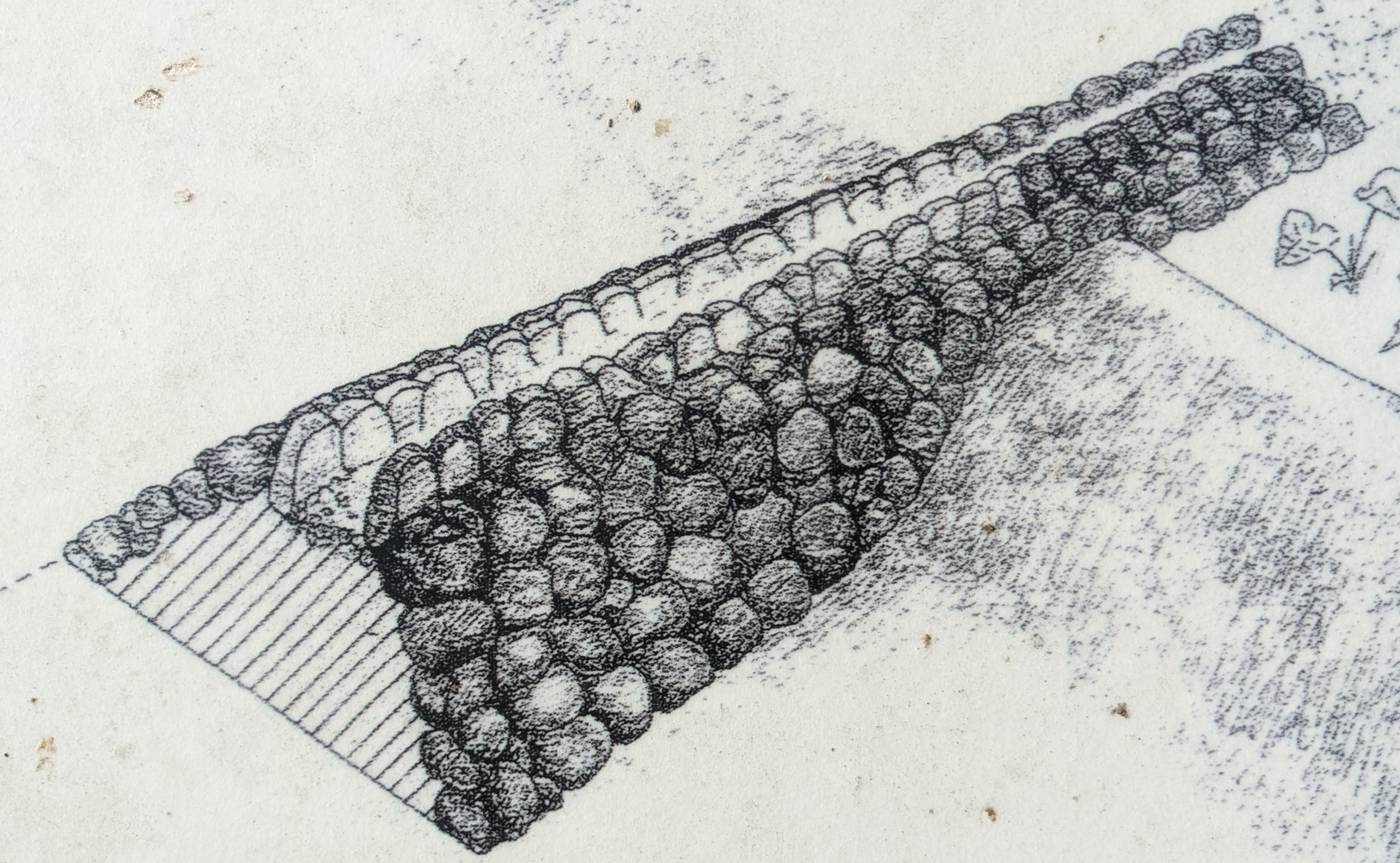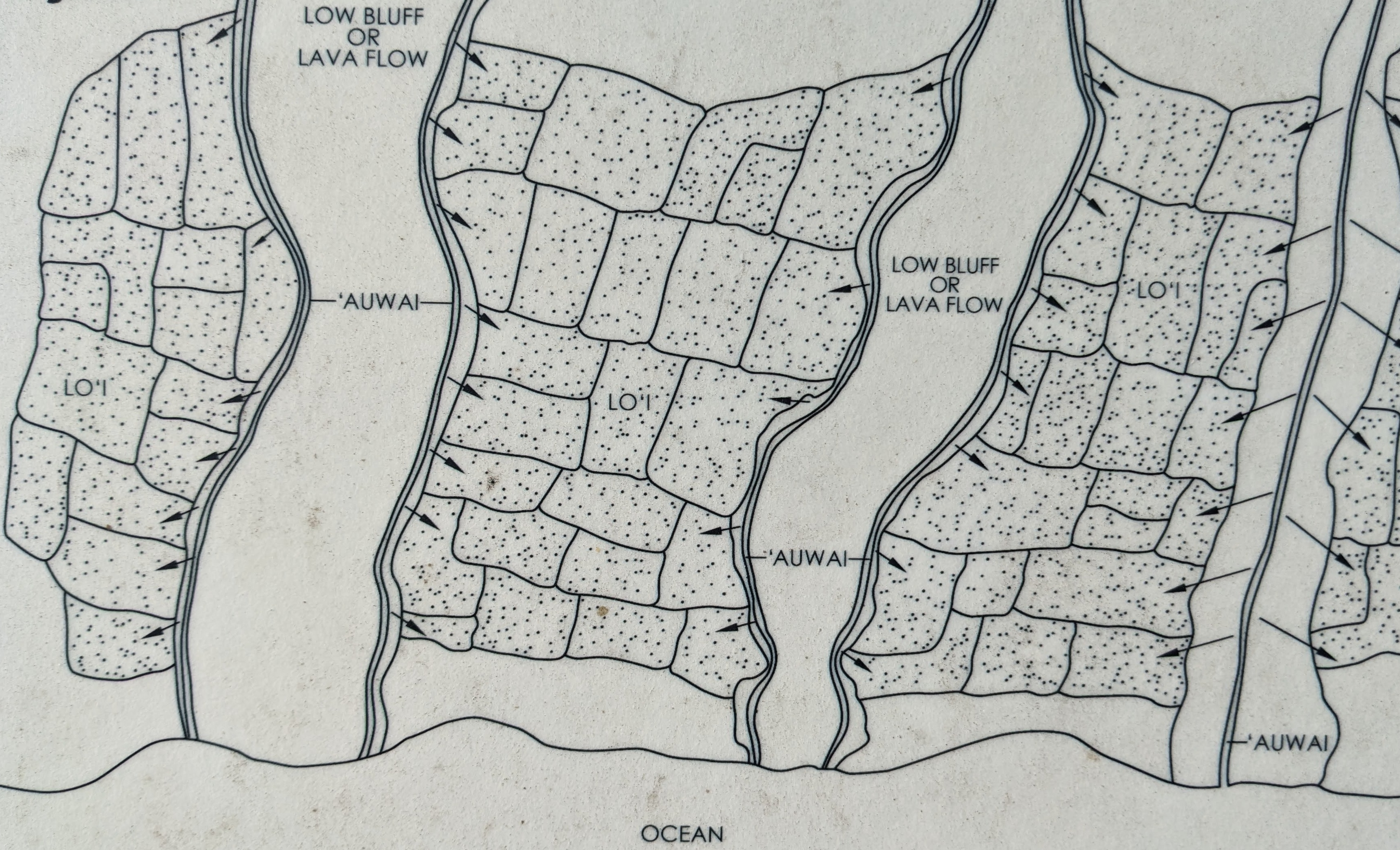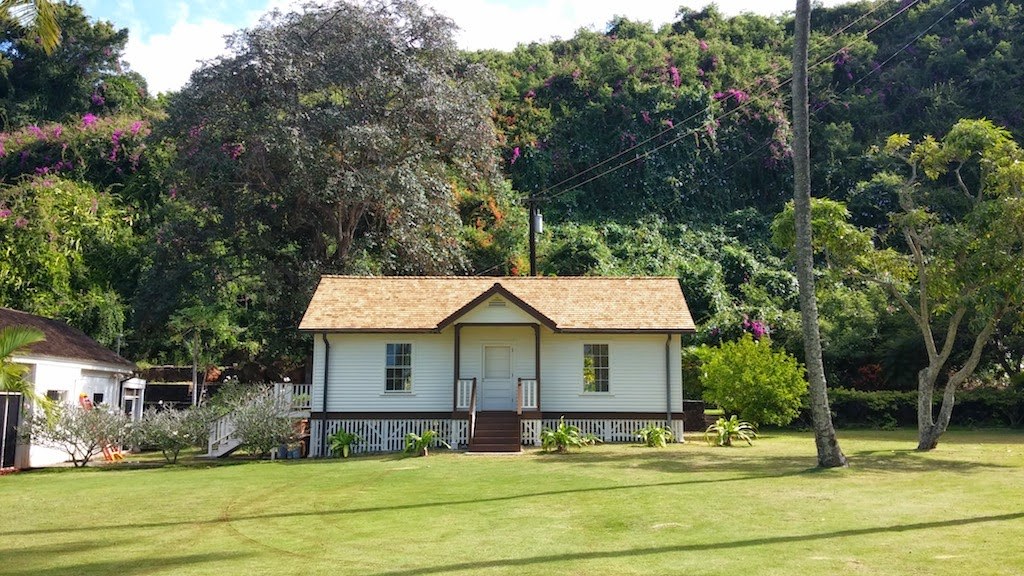Ancient Engineering: How Water Flowed into the South Side
Kōloa Field System: Ancient Engineering to Saturate the South Side
As our community works together to ensure a sustainable future, Grove Farm is inspired by examples from our island’s history that show responsible land stewardship.
In sunny Kōloa, where the weather is dry, the soil is rocky, and lava tubes crisscross underground, native Hawaiians found genius ways to irrigate their agricultural fields to keep their ahupuaʻa thriving. Back in the late ’70s and early ’80s, evidence was unearthed that revealed the Kōloa Field System, dating back to 1400 A.D. This ancient wonder spans a whopping 1,000 acres and was a game-changer, bringing much-needed water to the area.

Picture this: a thousand acres of sophisticated ʻauwai (irrigation ditches) that fed terraced loʻi kalo andnother fields full of sweet potato, bananas, and native sugar cane.

Mastering the flow of water is no small feat, but the native Hawaiians were pioneers. They meticulously hand-dug a system, allowing water to gracefully descend from mauka to makai. Given Kōloa’s less-than-ideal farming conditions with its limestone and rocky terrain, they discovered precious pockets of land with soft soil, aptly named kīpuka—nature’s untouched havens amidst the lava.

Queen Emma’s Cottage in Lāwa‘i Valley
By Hank Soboleski
This article describes how Hanalei-raised George Norton Wilcox, who led Grove Farm from 1864 until he died in 1933, helped to irrigate Queen Emma’s home at Mauna Kilohana. It was originally published in the Monday, October 7, 2019 issue of The Garden Island. Longtime Kaua‘i resident Hank Soboleski shared the island’s history with the newspaper, which can be found here and here.
“During Queen Emma’s sojourn on Kaua‘i during December 1870 through April 1871, she resided at Mauna Kilohana, which was located within the 4,200-acre ahupuaʻa of Lāwa‘i deeded to her by her aunt Hikoni.
Emma’s home at Mauna Kilohana was a frame house with a thatched roof situated atop the bluff on the Koloa side of Lāwa‘i Valley, overlooking Lāwa‘i Bay.
During her stay at Mauna Kilohana, Queen Emma asked William O. Smith and George Norton Wilcox to construct a water ditch to transform its arid pastureland into a garden, and the trio then located an upland water source on horseback.
Smith and Wilcox engineered the ditch, and men hired to build it were supplied with tools, blasting powder, and plenty of beer to ‘warm the men and make the work go faster,’ according to Emma.
By March 11, 1871, water reached her house at Mauna Kilohana.
Later in 1871, Emma leased her Lāwa‘i land to Duncan McBryde. In 1886, the year following her death, Duncan McBryde’s wife, Elizabeth McBryde, purchased the ahupuaʻa of Lāwa‘i for $5,000 at an auction held to pay off the queen’s debts.
Their son, Alexander McBryde, was granted the lower lands of Lāwa‘i in 1899.
And, in the early 1900s, with sugarcane about to be planted at Mauna Kilohana, Alexander McBryde cut Emma’s house into sections, had it carefully lowered over the pali onto the valley floor, where it became known as Queen Emma’s Cottage, and lived in it for a time.
When wealthy philanthropist Robert Allerton bought the lower part of Lāwa‘i in 1938, he preserved the cottage.
Queen Emma’s Cottage is now part of the National Tropical Botanical Garden.”

